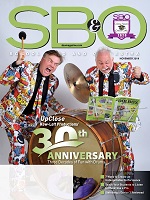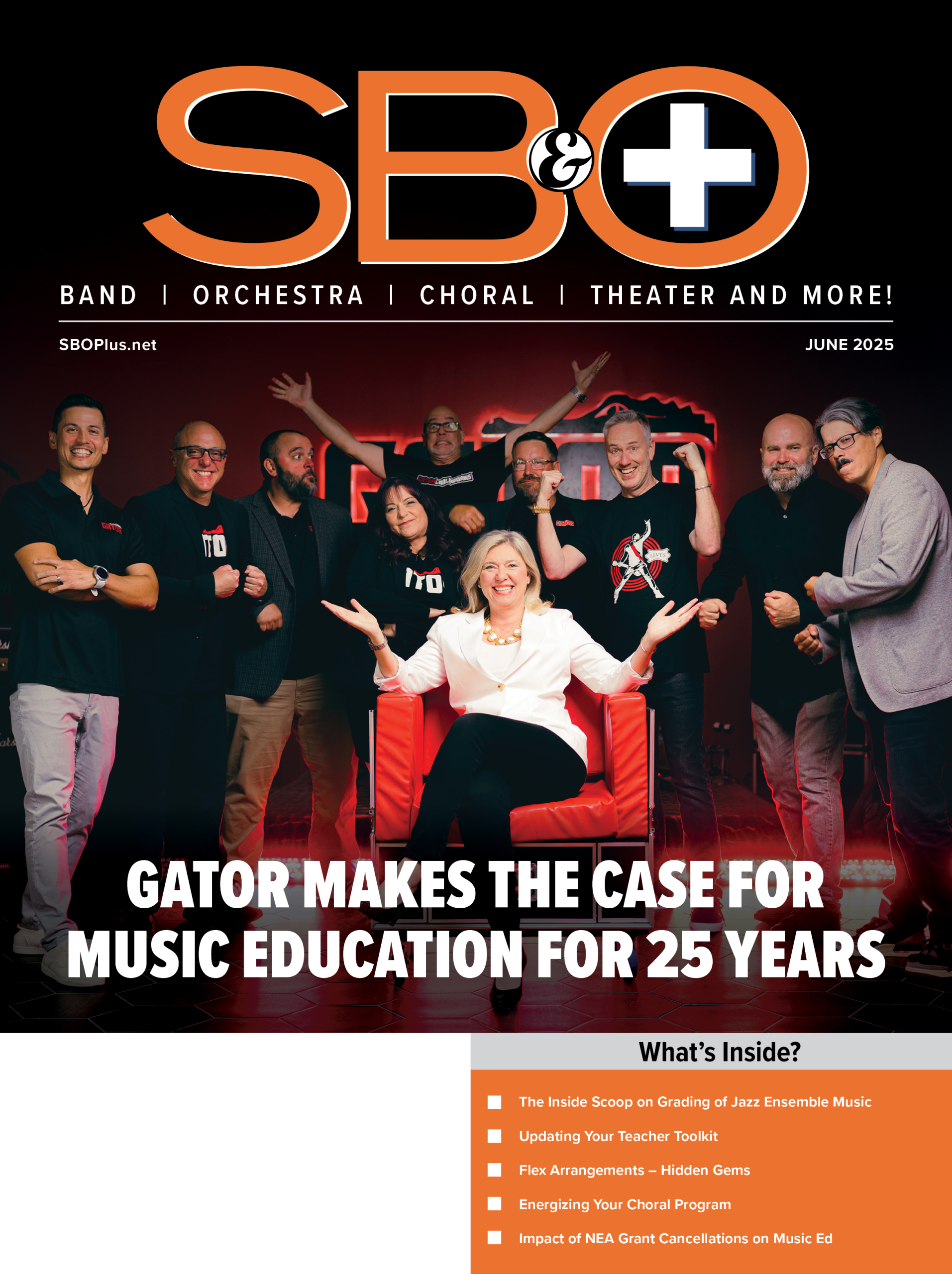Your percussionists probably represent the best-organized and best-behaved sections in your band, right?
No? How odd, seeing as they are far away in the very back of the band, like to hit things, can’t seem to sit still long enough for you to complete an entire sentence, and enjoy each other’s company so much that all they want to do is talk about sticks, drums, CDs, and so on…
Then when it comes time to pull up the Del Borgo or Holsinger piece featuring, seemingly, eight thousand percussion instruments, those same students invariably can’t find their music, let alone figure out the best setup in order for each of them to share instruments and have all implements within arms reach and ready to go.
I would like to offer some suggestions for what has worked with my high school percussionists when it comes time for organization and performance readiness.
Director’s Preparation
Much of the burden lies on the director. If I let my percussionists know ahead of time what pieces we will be playing and specifically what section(s) we will be working on, they can have the appropriate music ready to go, as well as whatever instruments they need for the piece. Hopefully students can get ready while the rest of the band is getting instruments and music out of their lockers. I do like to have my percussionists warm-up with the rest of the band, so I try to not use of any warm-up time for them to get ready for rehearsal.
I also assign parts for them to play and, this way, I make sure no one is left out. Additionally, I try to not always have the same kids playing timpani or mallets. My preference is for everyone in the section to play some snare drum, some timpani, some mallets, and some accessory percussion for each concert. It sometimes requires a degree of tricky configuring, since not every piece of music calls for a lot of percussion, but if I am preparing a Bach fugue, for example, I’ll have the percussionists double the flute, oboe, and bassoon on mallets. I may not always have them add their doubling in the actual concert, but for rehearsals, all of my percussion students are actively participating and reinforcing their mallet chops at the same time. In other words, they’re staying out of trouble and actually learning something!
When assigning parts, I will either print them in a spreadsheet or just list according to each tune. I will then hang a copy or two in the percussion section and on the percussion cabinet and give each of the students a copy as well. They can take a pencil and mark what percussion instrument(s) they need at the top of each piece of music for quick reference. I will also mark on my score cover who is playing what instrument. Additionally, I will mark in my score who is playing the triangle, suspended cymbal, woodblock, maracas, etc. so I can cue the individual player easier knowing them by name.
I often select pieces that incorporate a lot of percussion. The students enjoy it and audiences seem to, as well. It’s fun and exciting to watch what happens in the back of the band with all those things that are struck, shaken, clashed, and banged. With this in mind, each percussionist is often called upon to play more than one percussion instrument in any given song. I help my students out with some different setup options, as well as marking their parts for ease and fluidity in changing from one instrument to another.
Proper Equipment and Layout
I’ve seen plenty of concerts and rehearsals where the percussionists did not have the right equipment, mallets, or sticks ready to go and looked more like a discombobulated mess, rather than a well refined group with a calm, “ready to go” air.
First, for setting up their gear: If a student is playing bass drum on a piece, but also has to cover the clave part, they will need a place for their mallets and for the claves that is within easy reaching distance. The bass drum alone should have a small trap stand for holding different mallets in case a change is needed anyhow. All a player needs is to place the claves on the trap stand with the bass drum mallets and he or she is ready to go and won’t need to run around looking for the claves with only four measures rest to play.
Suppose your timpanist also has some suspended cymbal parts to play. By all means, lace a suspended cymbal right next to the timpani, so they don’t have to leave their playing area to go find a cymbal. And please don’t use your timpani mallets on the cymbal. Some nice yarn marimba mallets work wonderfully for suspended cymbals and you can save your timpani mallets for playing timpani. I understand that maybe more than one person needs a suspended cymbal in a song. If you do not have two or more cymbal stands with cymbals, try to arrange your set up for the easiest physical movement for the shared instrument. If there are many measures of rest, it may be perfectly easy for the timpanist to go to the suspended cymbal to play his or her part. Another option is to “create” another suspended cymbal. Can you use one from your schools drumset? Perhaps taking one of the crash cymbals on a strap and mounting it would work.
Often, a percussionist will be called upon to play snare drum, woodblock, triangle, suspended cymbal, and more, all during the same song. If this is the case, create a setup centered on the snare drum. Using a small trap stand (which can easily be a music stand with a towel laid across the table of the stand), place the small accessory instruments next to the snare drum. Place any necessary beaters and mallets on the trap table as well. Now, your snare drummer can easily put down his or her sticks, pick up the cymbal mallets, or triangle and beater and play easily and comfortably. There is no sense in having players race around trying to find the right instrument. Chances are, once they find it, they will have missed their part.
I have several keyboard X stands with carpeted boards (approx. 2′ X 3′) set up throughout the percussion section. Additionally, music stands with towels on the table work well for sticks and mallets for timpani, mallets and bass drum.
Road Map to Success
Many students who are not accustomed to playing several different percussion instruments on a given piece can be easily overwhelmed at the first encounter of such new ground. Looking at a map before your cross-country journey is always a good idea before stepping on the gas. The same is true here. With pencil in hand, the student and I create a road map on their part to make for the easiest and least complicated route. We’ll write down all of the necessary percussion instruments they need at the op of the page. This will save a lot of time later on when the percussionist is either trying to remember what they played or looking through the piece to see what instruments are needed. Often, a list is included at the top of a part, but sometimes, two or more percussionists are covering the part, so they need to know who plays what.
Next, look for which percussion instrument is played first and make a note if necessary. Let’s say the first instrument is triangle. When that part is over, write down to which instrument you are to play next. (“to Cr. Cyms.” or “to vibes”, etc.) Look over the part some more to determine what instrument is next until you have covered the entire tune for that student’s part. I know that for me, personally, it is helpful to have such “road maps” on my music.
Now that the parts are marked and your setup is in order, you can practice. Get comfortable switching from one mallet to another, from the triangle to the cymbals, etc. Being organized is half the battle. Once there, just play and have fun .
Joel Smales is director of bands at Binghamton High School’s Rod Serling School of Fine Arts in Binghamton, N.Y., where he conducts two concert bands, two jazz ensembles, a marimba band, and a steel drum band.




























